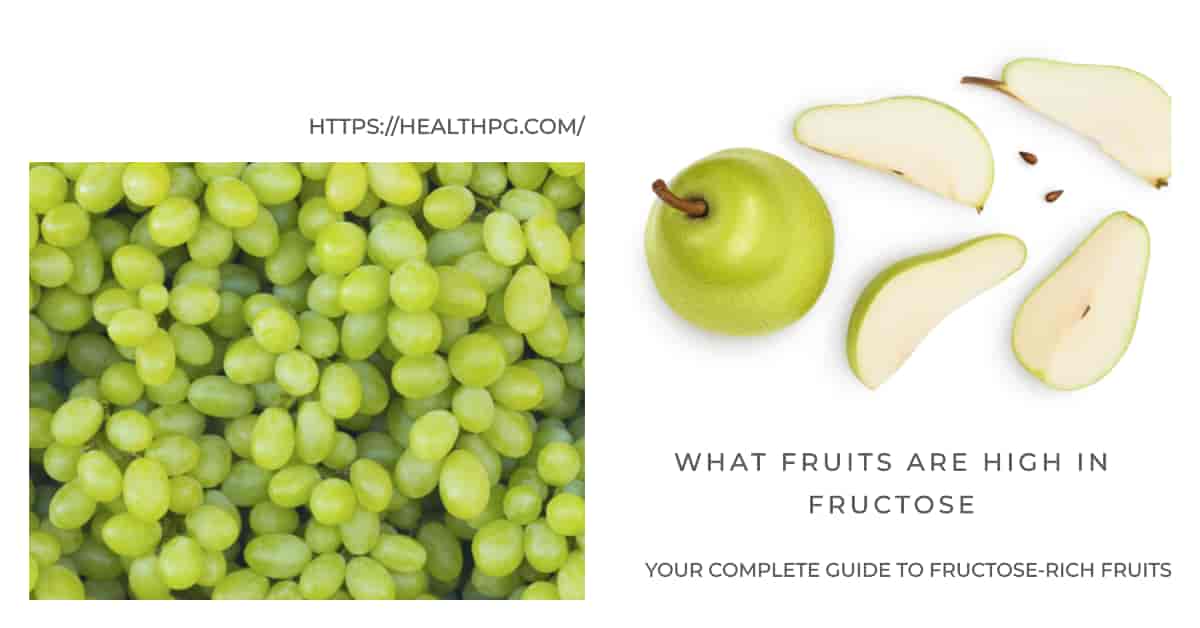Knowing which fruits are high in fructose is key for managing your sugar intake and staying healthy. This guide will help you understand which fruits have the most fructose and why it matters.
What is Fructose?
Fructose is a type of simple sugar found naturally in fruits, honey, and root vegetables. While it shares similarities with other sugars like glucose, its metabolic pathway in the body is distinct.
How Is It Different from Other Sugars
- Simple Sugar: Fructose is a monosaccharide, meaning it’s a simple sugar that doesn’t need to be broken down further.
- Metabolic Pathway: Unlike glucose, fructose is metabolized in the liver, where it can be converted into glucose, fat, or energy.
Metabolic Pathway of Fructose in the Body
- Liver Metabolism: Fructose is primarily processed in the liver, bypassing the regular insulin response mechanism.
- Health Implications: Excessive fructose intake can lead to liver stress, insulin resistance, and other metabolic issues.
Fruits with the Highest Fructose Levels
Certain fruits stand out for their high fructose content, making them important to identify if you’re monitoring your sugar intake.
Apples, Pears, and Grapes
- Apples: Contain up to 10 grams of fructose per serving, making them one of the highest in fructose content.
- Pears: Similar to apples, pears can contain up to 9 grams of fructose per serving.
- Grapes: These small fruits pack a fructose punch, with up to 8 grams per serving.
Detailed Breakdown of Their Fructose Content
- Varieties Matter: Different varieties of these fruits can have varying levels of fructose.
- Serving Size: The fructose content can also vary based on the size and ripeness of the fruit.
By understanding the science behind fructose and identifying fruits with the highest fructose levels, you can make informed dietary choices that align with your health goals. Whether you’re managing sugar intake for medical reasons or simply aiming for a balanced diet, this guide provides the insights you need.
Tropical Fruits: A Closer Look
Tropical fruits are not only exotic and flavorful but also contain varying levels of fructose that can impact your dietary choices.
Mangoes, Pineapples, and Bananas
- Mangoes: A single mango can contain up to 45 grams of fructose, making it a high-fructose fruit.
- Pineapples: With about 6 grams of fructose per cup, pineapples are moderately high in fructose.
- Bananas: These popular fruits contain around 7 grams of fructose per medium-sized banana.
How Their Fructose Levels Compare
- Fructose Density: Mangoes are particularly dense in fructose, while pineapples and bananas offer a more moderate amount.
- Portion Control: Being aware of serving sizes can help manage fructose intake when consuming these fruits.
Berries and Stone Fruits
Berries and stone fruits offer a range of flavors and fructose levels, adding another layer to your fruit choices.
Strawberries, Cherries, and Peaches
- Strawberries: These berries contain about 4 grams of fructose per cup.
- Cherries: With approximately 9 grams of fructose per cup, cherries are on the higher end among berries.
- Peaches: A medium-sized peach contains around 5 grams of fructose.
Fructose Content and Health Considerations
- Antioxidant Benefits: Despite their fructose content, these fruits are rich in antioxidants that offer health benefits.
- Moderation is Key: While these fruits are nutritious, their fructose content should be considered for those monitoring sugar intake.
Health Implications of High Fructose Intake
Understanding the health implications of high fructose intake is crucial for making informed dietary choices.
Impact on Liver Health
- Liver Stress: Excessive fructose is metabolized in the liver, where it can contribute to liver stress and fatty liver disease.
Insulin Resistance and Obesity
- Insulin Sensitivity: High fructose intake can lead to insulin resistance, a precursor to type 2 diabetes.
- Weight Gain: Fructose can also contribute to weight gain and obesity when consumed in excess.
Recommendations for Consumption
- Moderation: The key is to consume high-fructose fruits in moderation.
- Consult a Healthcare Provider: For those with existing health conditions, consulting a healthcare provider for personalized advice is recommended.
How to Manage Fructose in Your Diet
Managing fructose in your diet involves more than just identifying high-fructose fruits. Here are some actionable tips.
Tips for Balancing High-Fructose Fruits with Other Foods
- Pair with Protein: Combining high-fructose fruits with protein can help balance blood sugar levels.
- Fiber is Your Friend: Opt for fruits that are also high in fiber to slow down fructose absorption.
Alternative Fruits with Lower Fructose Levels
- Berries: Blueberries and raspberries are lower in fructose and can be a good alternative.
- Melons: Watermelon and cantaloupe offer sweetness without the high fructose content.
Conclusion
Fructose in fruit matters, especially if you’re watching your sugar intake. This guide breaks down how your body handles fructose, pinpoints the fruitiest fruits, and gives you the info you need to make smart choices. We’ve included the latest research to help you manage your fructose intake effectively. Whether you have health concerns or just want to eat healthier, this guide is a valuable resource.

